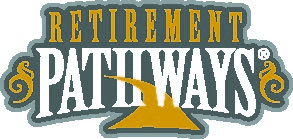SUBSCRIBE
Enter your Name and Email address to get
the newsletter delivered to your inbox.
Please include name of person that directed you to my online newsletter so I can thank them personally.


Dianne Williams Wildt, MBA
Certified Retirement Counselor®
Since 1983 in the financial services and investment industry
Retirement Pathways, Inc.
4500 Bowling Blvd., Suite 100
Louisville, KY 40207
Phone: 502-797-1258
Email: dianne@retirementpathways.com
Website: www.retirementpathways.com

If you're nearing or in retirement and concerned about paying too much in taxes, you may want to convert a portion or all of your taxable retirement plan assets to a tax-free Roth IRA*. Here's how it works.
If you're nearing retirement but still working, the extra income can also cause you to become ineligible for current contributions to an existing Roth IRA. In 2025, contribution amounts begin to be limited when modified adjusted income hits $236,000 and phase out completely at $246,000 for taxpayers who are married and filing jointly. Limits for single and head of household filers phase out between $146,000 and $165,000.** But you do have alternative ways to save if that's the case.
Unlike traditional retirement accounts, the Roth IRA is not subject to what's known as required minimum distributions (RMDs), so, you needn't take a Roth distribution in your lifetime. Your financial professional can tell you more.
* Converting from a traditional IRA to a Roth IRA is a taxable event. A Roth IRA offers tax free withdrawals on taxed contributions. To qualify for the tax-free and penalty-free withdrawal of earnings, a Roth IRA must be in place for at least five tax years, and the distribution must take place after age 59ó or due to death, disability, or a first-time home purchase (up to a $10,000 lifetime maximum). Roth IRA distributions may be subject to state taxes.
**IRS.gov
Enter your Name and Email address to get
the newsletter delivered to your inbox.
Please include name of person that directed you to my online newsletter so I can thank them personally.
Enter your Name, Email Address and a short message. We'll respond to you as soon as possible.
Investment advisory services offered through American Capital Management, Inc., a State Registered Investment Advisor. Retirement Pathways, Inc. is independent of American Capital Management, Inc.
Retirement Pathways, Inc. and LTM Marketing Specialists LLC are unrelated companies. This publication was prepared for the publication’s provider by LTM Client Marketing, an unrelated third party. Articles are not written or produced by the named representative.
The information and opinions contained in this web site are obtained from sources believed to be reliable, but their accuracy cannot be guaranteed. The publishers assume no responsibility for errors and omissions or for any damages resulting from the use of the published information. This web site is published with the understanding that it does not render legal, accounting, financial, or other professional advice. Whole or partial reproduction of this web site is forbidden without the written permission of the publisher.